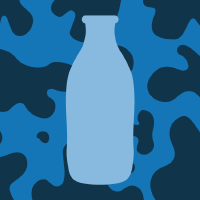Topic Menu
► Topic MenuTopic Editors

Advances in Animal-Derived Non-Cow Milk and Milk Products

Topic Information
Dear Colleagues,
The total animal-derived milk production worldwide in 2020 was 886.9 million tonnes, of which cow milk accounted for approximately 81%. The most popular non-cow milk (NCM) was buffalo milk, accounting for 15.2% of global milk production. Other non-cow species, such as goats, sheep and camels, accounted for a much smaller share of global milk production: 2.3%, 1.2% and 0.4%, respectively. Milk from small ruminants and camels, which accounts for less than 5% of global milk production, is important for the economies of the Mediterranean and Southeast Asian countries. Non-cow milk derived from other animals, such as reindeer, donkey, mare, yak and llama, is not commonly consumed but is of great cultural importance in local communities.
Interest in animal-derived NCM and products is growing, among other reasons, due to the exceptional taste, good nutritional and pro-health values and low allergenicity compared to cow milk (also providing potential applications in infant formula). However, current information on unique aspects of non-cow milk and products in terms of biologically active compounds that support health is still scarce.
For this reason, we propose the topic of “Advances in Animal-Derived Non-cow Milk and Milk Products” and welcome original research and review article submissions from scholars.
The contents that can be covered in this Topic include, but are not limited to:
- The social, economic, and environmental aspects of the production and distribution of non-cow milk and milk products;
- Current problems of NCM production, milking, raw milk microbial quality and animal health and welfare;
- The safety of non-cow milk;
- The composition and properties of NCMs and their products;
- Flavour and sensory characteristics;
- Consumer acceptance and preference for NCM in selected countries;
- Innovative functional NCM products from various mammal species;
- Health aspects of non-cow milk;
- Potential applications of NCM in infant nutrition.
Prof. Dr. Jacek Antoni Wójtowski
Prof. Dr. Jan Pikul
Dr. Maria Markiewicz-Kęszycka
Topic Editors
Keywords
- non-cow milk
- non-cow milk products
- milk quality
- milk distribution
- biologically active compounds
- sensory assessment
- consumer acceptance
- allergenicity
- infant formula
- functional milk products
Participating Journals
| Journal Name | Impact Factor | CiteScore | Launched Year | First Decision (median) | APC | |
|---|---|---|---|---|---|---|

Agriculture
|
3.3 | 4.9 | 2011 | 20.2 Days | CHF 2600 | Submit |

Animals
|
2.7 | 4.9 | 2011 | 16.1 Days | CHF 2400 | Submit |

Dairy
|
- | 4.4 | 2020 | 21.5 Days | CHF 1200 | Submit |

Foods
|
4.7 | 7.4 | 2012 | 14.3 Days | CHF 2900 | Submit |

Nutrients
|
4.8 | 9.2 | 2009 | 17.5 Days | CHF 2900 | Submit |

MDPI Topics is cooperating with Preprints.org and has built a direct connection between MDPI journals and Preprints.org. Authors are encouraged to enjoy the benefits by posting a preprint at Preprints.org prior to publication:
- Immediately share your ideas ahead of publication and establish your research priority;
- Protect your idea from being stolen with this time-stamped preprint article;
- Enhance the exposure and impact of your research;
- Receive feedback from your peers in advance;
- Have it indexed in Web of Science (Preprint Citation Index), Google Scholar, Crossref, SHARE, PrePubMed, Scilit and Europe PMC.



